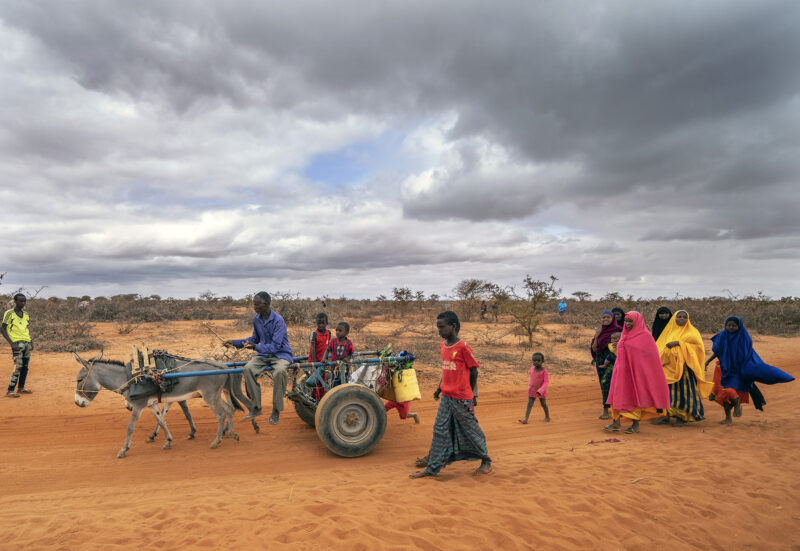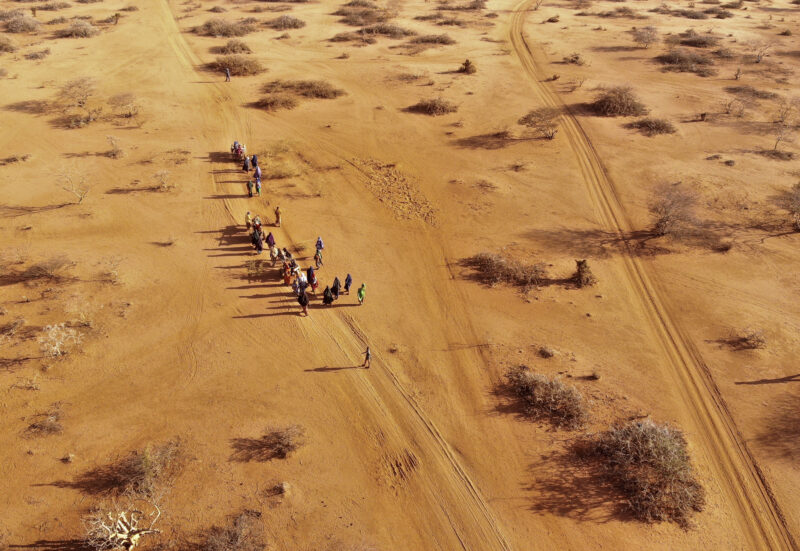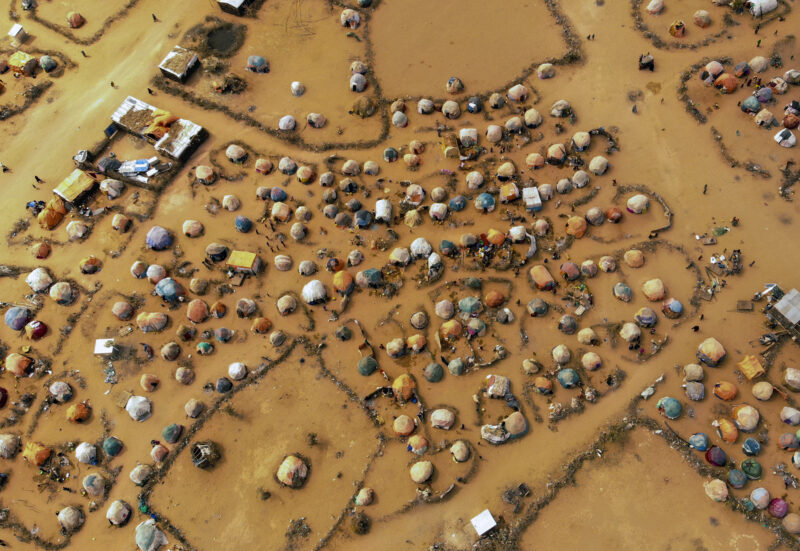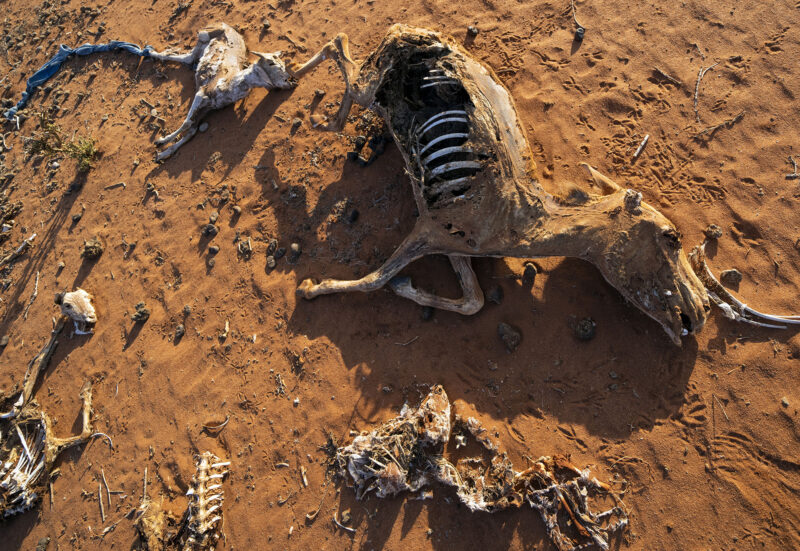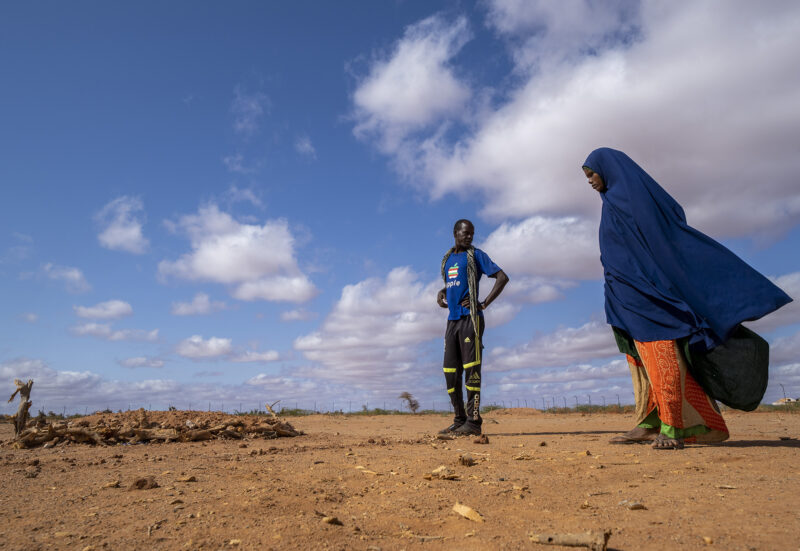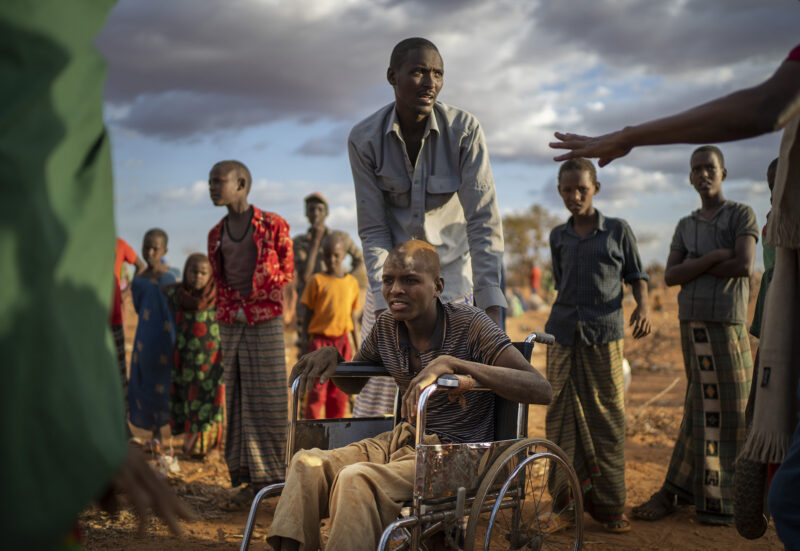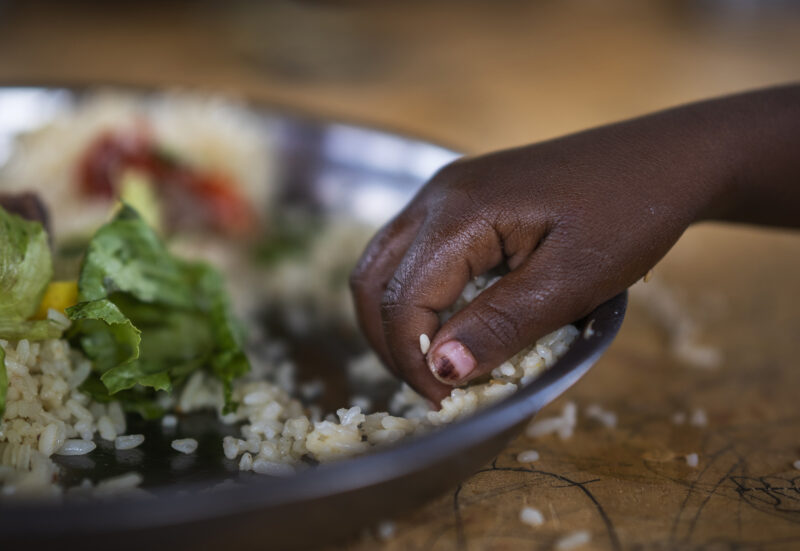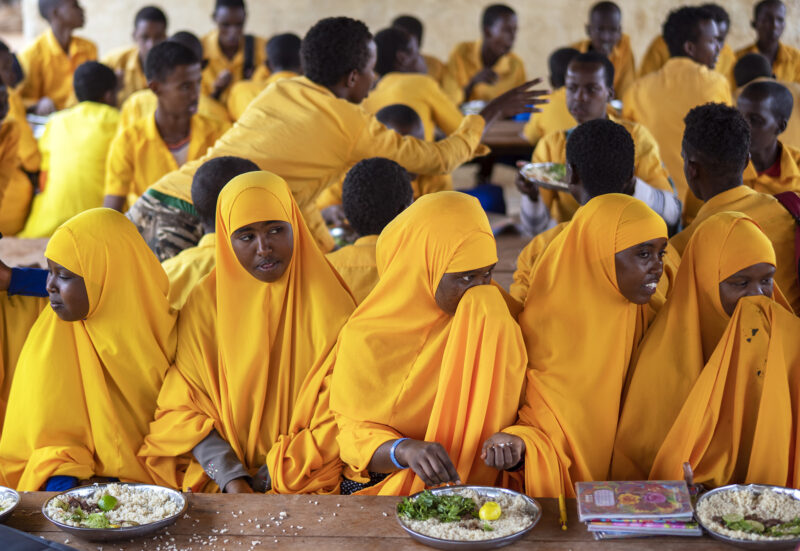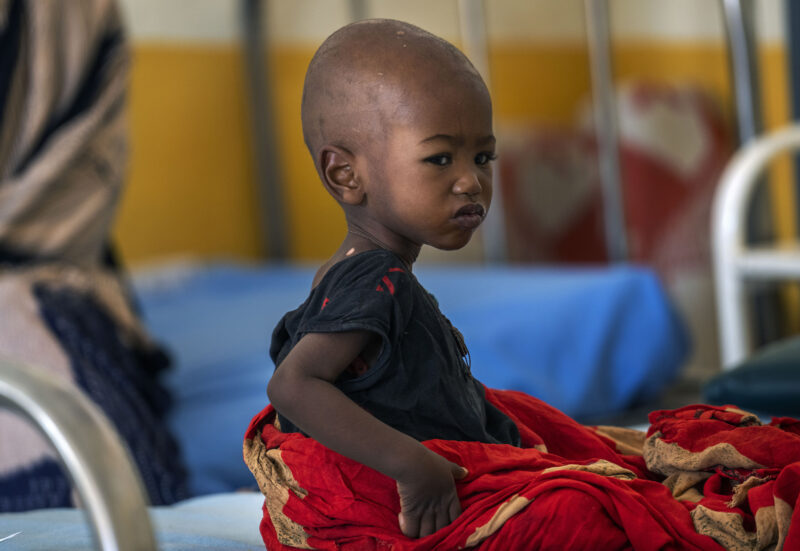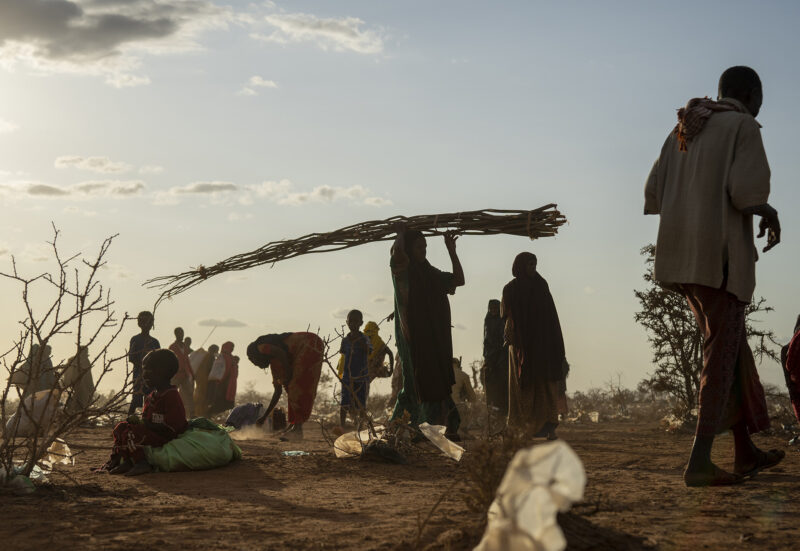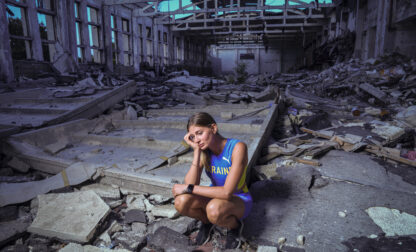Early this year, as it became clear that the effects of prolonged drought in Somalia could go from bad to catastrophic, East Africa correspondent Cara Anna and the AP’s Africa leadership team spent months trying to arrange a trip.
Reporting from war-torn Somalia is difficult — terrorist groups operate in much of the country. But Anna convinced the World Food Program to host the AP, arguing that AP’s reach would help readers worldwide understand the multiple crises affecting Somalia.
At the same time, Anna and Climate team editors brainstormed possible subjects for an ongoing series looking at people who are forced to relocate, displaced by climate change. Somalia’s drought, exacerbated by climate change and insecurity, has forced major migration, both internally and across borders.
By the time the United Nations warned in August that a famine may soon be declared, AP had received a grant from the Pulitzer Center to fund the trip for two all-formats packages: one on climate migration, the other focused on the drought and the growing humanitarian crisis.

Anna, Africa chief photographer Jerome Delay and senior video producer Nqobile Ntshangase spent several days amid the heat and dust, constantly ringed by armed security as they conducted numerous interviews and gathered striking images to convey the unfolding crisis.
In the course of their reporting, the journalists met two blind men who are close friends — compelling lead subjects for the migration story. The following day, the team tracked the men down in the growing camp of displaced persons, gathering as much material as they could in limited time, given security considerations, afternoon prayers and curfew.
The story was turned around quickly,produced by the Climate desk: Photo editor Alyssa Goodman worked with Delay on a photo edit and presentation,video editor Teresa De Miguel produced the consumer video piece with Ntshangase,and news editor Dana Beltaji worked with Anna on the text edit.
While many news organizations have covered the drought,and some have done stories from hard-hit areas,none have looked at the crisis through the lens of climate migration or the particular challenges facing disabled people,who are among the most vulnerable. The story,photos and video were widely used,including The Washington Post,USA Today,MSN,Yahoo and more.
The impact was immediate,garnering the attention of top U.N. officials. Stéphane Dujarric,spokesman for the U.N. secretary general,wrote Anna in an email: “What a powerful story on Somalia. You and your visual colleagues did an amazing job. No doubt it will get people to pay attention to this under reported crisis.” Martin Griffiths,U.N. undersecretary for humanitarian affairs,tweeted the story to his 135,000 followers:
Blind and homeless in drought stricken #Somalia. ⁰⁰Issack and Hassan are lifelong friends. Now they have to navigate the trauma of hunger and displacement. ⁰⁰Theirs is a story seldom told: How persons with disabilities are affected by emergencies.⁰⁰https://t.co/JbWs5NOu87
— Martin Griffiths (@UNReliefChief) September 30, 2022
And Griffiths’ spokeswoman tweeted: “If you read only one thing today,make sure it’s this story …”
But the team wasn’t done. Working with AP’s Enterprise desk,Anna,Ntshangase and Delay produced another package on the impact of drought and how it has led to severe hunger and the deaths of thousands. Enterprise news editor Janelle Cogan worked with Anna,editing the story and an explainer on famine,while multiformat journalist Allen Breed produced the consumer video using Ntshangase’s footage and Delay’s drone video. Goodman again worked with Delay on the photo edit and presentation, and climate data journalist Mary Katherine Wildeman analyzed data for a graphic showing food insecurity spreading to more of the Somali population.
The famine coverage was used by the Los Angeles Times,Toronto Star and others,and was tweeted to hundreds of thousands of followers by the CEO of Save the Children and by the International Rescue Committee.
For unique,compelling coverage of emerging humanitarian crises on the Horn of Africa,the team of Anna, Delay and Ntshangase takes AP’s Best of the Week — Second Winner honors.
#somalia "In Somalia,a nation of poets, droughts are named for the kind of pain they bring. Somalis say the current drought is worse than any they can remember. It doesn’t yet have a name. https://t.co/Ttob0DHRg9
— jerome delay (@jeromedelay) October 5, 2022
Climate Migration: Blind and homeless amid Somalia's drought (from @AP) https://t.co/jblAVHHrZt
— jerome delay (@jeromedelay) September 29, 2022
Griffiths’ spokeswoman wrote this to Anna: “A quick note to say that I loved loved loved your story on Somalia today. We don’t talk enough about what displacement and trauma mean for persons with disabilities. Really excellent reporting.” She also tweeted this: “If you read only one thing today, make sure it’s this story …”
Visit AP.org to request a trial subscription to AP’s video,photo and text services.
For breaking news, visit apnews.com.



